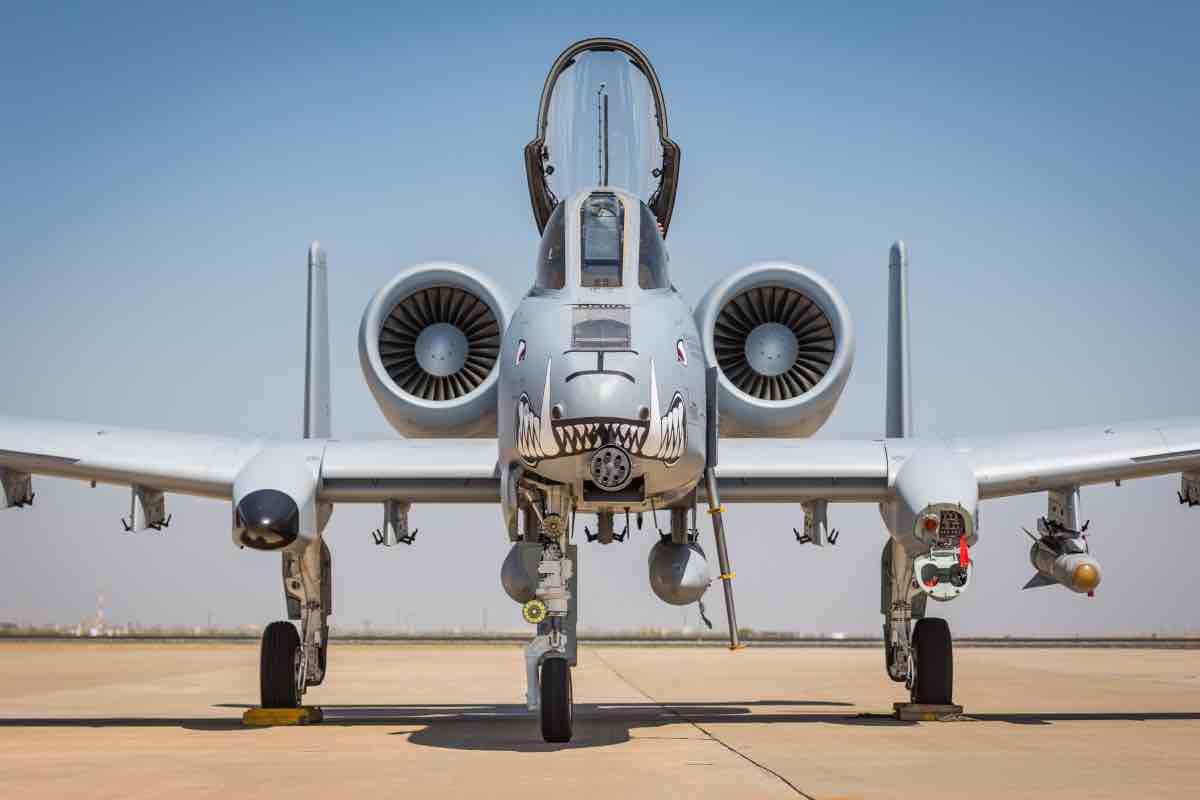I know all Naval aviators have call signs, if you want I can nominate yours as “Donut”.

It could absolutely be worse so I'll take it.
Follow along with the video below to see how to install our site as a web app on your home screen.
Note: This feature may not be available in some browsers.
I know all Naval aviators have call signs, if you want I can nominate yours as “Donut”.

Greyghost is know to his friends as "Blowhole" ...It could absolutely be worse so I'll take it.
Did everyone forget we have this thing called a B2. So mission could be done with 35s, 22s, and B2s. Probably could be done with tomahawks using tercom mode as well.Also you use one F35 to jam, another to acquire targets and then you load up legacy aircraft like the Super Hornet and the F15 with munitions at stand-off range. The F35 track targets, the legacy aircraft fire missiles and they get directed on target by aircraft that the enemy cannot track.
Greyghost is know to his friends as "Blowhole" ...
Did everyone forget we have this thing called a B2. So mission could be done with 35s, 22s, and B2s. Probably could be done with tomahawks using tercom mode as well.
Fun movie none the less
That's what I was suggesting, F-117/B2 two punch combo.Did everyone forget we have this thing called a B2. So mission could be done with 35s, 22s, and B2s. Probably could be done with tomahawks using tercom mode as well.
Fun movie none the less
They retired the 117 in 2008.That's what I was suggesting, F-117/B2 two punch combo.
You have very good knowledge on Fighter aircraft. I have many, many friends that are retired pilots, and now work in the defense industry at Eglin, which is a test base. Fighter planes from WWII until now have been my hobby! LOLThey can build tough, they can build cheap and they can build fast but they cannot build high tech nor efficient.
The Mig-25 was a monster with amazing speed but it's range was ridiculously short and its avionics were a joke. The Russians still cannot build a jet engine that creates massive power and long range. They can build one or the other but they cannot combine the two.
Interestingly enough, the SU-27, with which the SU-57 is built upon, was only possible for Russian engineers due to stolen technology from our F-15 program. The SU-57 is a modernized version of the SU-27. Both still suffer from inefficient engines. The 27 was only suitable as a defensive weapon due to its relatively short range. To extend range it has to be loaded with so much fuel that it struggles at takeoff and then there is a tradeoff on how much armament it can carry.
One last nerd point...these engines are also why Russia and China struggle with aircraft carriers. Due to weight and fuel capacity, they've always had to use ski-jump carriers to get their jets off the deck. That limits their abilities from their flight decks and gives us a massive Naval advantage. The Chinese are attempting to rectify this gap but we will see.
The F-18 Super Hornet Strike/Fighter is still one of the best planes in the world, and it's useful life is not nearly over yet....
March 24, 2022 5:04 PM
NAVAL AIR STATION NORTH ISLAND, Calif. – The Navy is making the first major changes to the carrier air wing in a generation. The service just wrapped up the first carrier deployment of the F-35C Lightning II Joint Strike Fighters – the first new fighter jet on a carrier in 20 years.
The complete transition to the as yet combat unproven F-35 will take years yet.
In an interview last month with USNI News, Vice Adm. Kenneth Whitesell, the commander of Naval Air Forces and Naval Air Force Pacific, laid out his vision for blending 4th- and 5-generation aircraft into the future carrier air wing and the transition to future sixth-generation systems.
Whitesell is also focused on remediating the backlog of Super Hornets waiting to enter the Service Life Modification program that will upgrade the aircraft and extend their service lives; implementing lessons from the first F-35C deployment to inform the future of carrier aviation; and ensuring it has enough fighters to meet its air wing requirements by 2025.
From modernizing the fourth-generation F/A-18E-F Super Hornets, to the ongoing integration of the F-35Cs into the carrier air wing, to a 2022 emphasis on cost-saving measures, Whitesell says U.S. naval aviation is on a path to eliminate fighter gaps in the next three years, while achieving new mission-capable rate goals affordably.
“We can’t afford the ultimate numbers that we have at this price that we’re paying today. We have to squeeze efficiencies out. And that is the 2022 focus for naval aviation, is the cost transformation,” Whitesell said, referring to the mission-capable rates the Navy uses to evaluate the readiness of its aircraft.
But Congress remains skeptical of the service’s math on its strike fighter shortfall, which the Navy says it can eliminate by 2025, five years sooner than anticipated. The Navy’s future carrier air wing will include a mix of both fourth- and fifth-generation aircraft, with the F-35C and the Super Hornets making up the strike fighter fleet. The recent F-35C deployment aboard USS Carl Vinson (CVN-70) – the first fifth-generation aviation deployment on a carrier – featured a squadron of 10 aircraft, so the Navy could get the F-35 operating forward quickly.
The Navy is required to have nine carrier air wings and has called for each air wing to include 44 strike fighters for a total of 396 combat-coded aircraft, according to a 2020 summary reviewed by USNI News. In addition to the strike fighters earmarked for air wings, the Navy says it needs 263 for training and development and 126 in long-term maintenance for a total of 785 fighters. These numbers do not include attrition reserve aircraft. The shortfall is the difference between the number of aircraft in the Navy’s inventory and the number of combat-coded strike fighters it says it needs to meet its missions, or 396.
The Navy’s stated goal is to eliminate the strike fighter shortfall by 2025, an objective Whitesell described as having several moving parts. According to the service, the current shortfall is 35 aircraft.
Leave it to the Chair fore to retire perfectly good aircraft (F-117. SR-71) or attempt to (A-10)They retired the 117 in 2008.
If this was "Iran" or any other ME country then Israel or SA would have let us use their bases for the 35s or 22s. But since the movie already was using a fictional aircraft then they could have made the date further out and pretended to have operational F35Cs
Leave it to the Chair fore to retire perfectly good aircraft (F-117. SR-71) or attempt to (A-10)
The snobs in the AF never really wanted the ugly warthog to begin with.
The troops on the ground still want it around when things go bad.


 militarymachine.com
militarymachine.com
Greyghost is know to his friends as "Blowhole" ...

Excellent discussion with an actual Top Gun pilot where he talks about this and the movieSo these planes may be unproven in actual combat...but they HAVE flown against our F15's and 16's. It just is not a fair fight. To my knowledge, we have never lost an F15 in air to air combat. During testing, they were blowing F15's out of the sky before they ever knew they were being targeted. 5th gen is on another level, and it HAS to be. I was around in 1973 when F15's came in to service here. That plane is STILL better than any plane in the world...not American made. American pilots are the difference.
Good article, but they do check identity boxes with every best of the best pilot ...
I remember when the Russian pilot defected to Japan with the Mig 25. It was built out of stainless steel...not titanium. Has ZERO range in afterburner. The best think about the Mig 25 is it is THE reason we built the F 15 as good as we did. The F15 is in another league compared to the MIG 25.They can build tough, they can build cheap and they can build fast but they cannot build high tech nor efficient.
The Mig-25 was a monster with amazing speed but it's range was ridiculously short and its avionics were a joke. The Russians still cannot build a jet engine that creates massive power and long range. They can build one or the other but they cannot combine the two.
Interestingly enough, the SU-27, with which the SU-57 is built upon, was only possible for Russian engineers due to stolen technology from our F-15 program. The SU-57 is a modernized version of the SU-27. Both still suffer from inefficient engines. The 27 was only suitable as a defensive weapon due to its relatively short range. To extend range it has to be loaded with so much fuel that it struggles at takeoff and then there is a tradeoff on how much armament it can carry.
One last nerd point...these engines are also why Russia and China struggle with aircraft carriers. Due to weight and fuel capacity, they've always had to use ski-jump carriers to get their jets off the deck. That limits their abilities from their flight decks and gives us a massive Naval advantage. The Chinese are attempting to rectify this gap but we will see.

